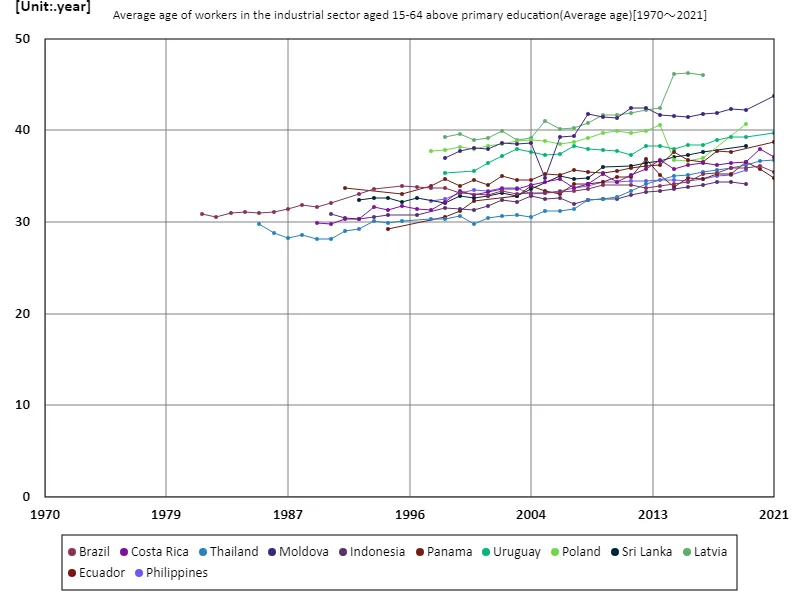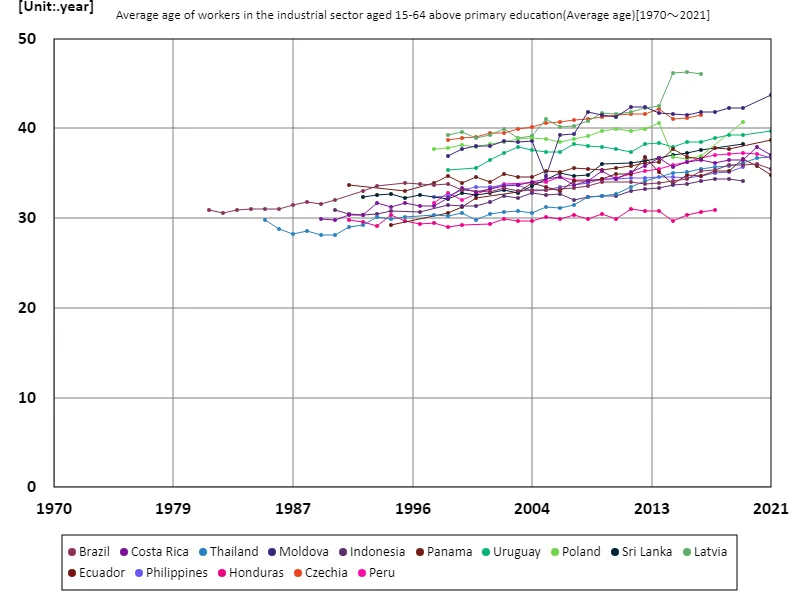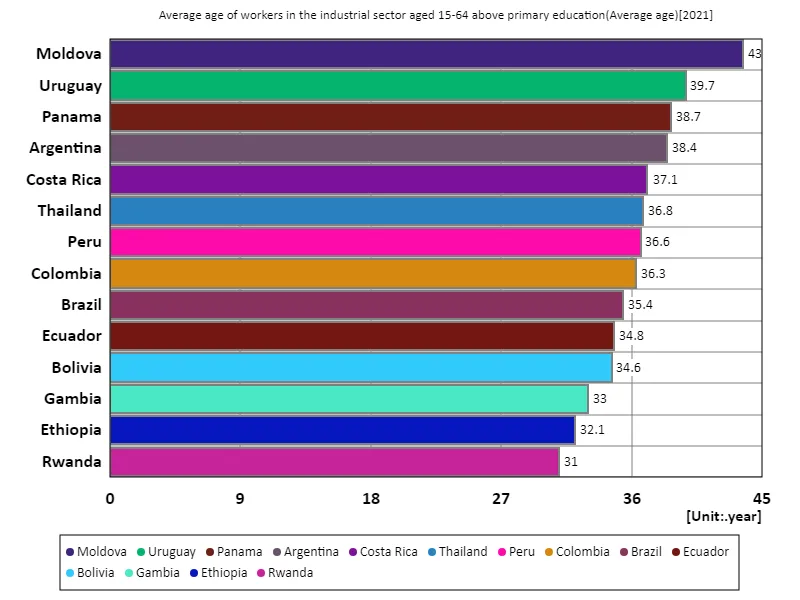- Abstract
- Industrial sector, workers aged 15-64 with secondary education or higher, average age
- Industry sector, workers aged 15-64 with secondary education or higher, average age (worldwide)
- Industry sector, workers aged 15-64 with secondary education or higher, average age (world countries, latest year)
- Reference
Abstract
Moldova’s high average age of 43.7 years for industrial sector workers with secondary education or above reflects broader trends seen in many Eastern European nations. Over the past few decades, these countries have faced significant demographic shifts, with aging populations due to low birth rates and emigration, especially among younger, educated workers seeking better opportunities abroad. This has led to a shrinking workforce in key sectors like industry, which increasingly relies on older workers. Younger generations, facing fewer local opportunities, often migrate for employment, exacerbating this trend.
Industrial sector, workers aged 15-64 with secondary education or higher, average age
Latvia’s peak average age of 46.3 years for industrial sector workers with secondary education or higher, recorded in 2015, highlights the aging workforce in many developed economies. This trend has been influenced by low birth rates, limited immigration, and an outflow of younger talent seeking better opportunities abroad. Over the decades, countries like Latvia have seen older workers remaining in the workforce longer, while younger generations face challenges such as skills mismatches and fewer local employment prospects. As of 2021, Latvia is maintaining a near-peak average age, reflecting these persistent demographic shifts.


The maximum is 46.3year[2015] of Latvia, and the current value is about 99.4%
Industry sector, workers aged 15-64 with secondary education or higher, average age (worldwide)
Latvia’s industrial sector workers, with secondary education or higher, reached an average age of 46.3 years in 2015, the highest globally. As of 2021, the country remains close to this peak, at 99.4%. This trend reflects a broader global shift towards an aging workforce, driven by low birth rates, delayed retirements, and youth migration for better opportunities. The industrial sector in many nations now relies more on older workers, while younger generations face challenges in entering the workforce due to skill mismatches or limited local employment options. This demographic shift is reshaping labor dynamics worldwide.


The maximum is 46.3year[2015] of Latvia, and the current value is about 99.4%
Industry sector, workers aged 15-64 with secondary education or higher, average age (world countries, latest year)
As of 2021, Moldova has the highest average age of workers in the industrial sector with secondary education or higher, at 43.7 years. This reflects a broader trend of aging workforces in many countries, driven by low birth rates and emigration of younger, skilled workers seeking better opportunities abroad. The global average age for this group is 36.3 years, highlighting a significant variation between nations. Moldova’s aging workforce is indicative of a wider shift, where older workers are staying longer in the labor market, and younger generations face challenges in accessing employment in key sectors.


The maximum is 43.7year of Moldova, the average is 36.3year, and the total is 508year



Comments